Danesfort
Houses within 5km of this house
Displaying 22 houses.
Houses within 5km of Danesfort
Displaying 22 houses.
| House name | Description | |
|---|---|---|
| Longueville House | Longueville House was the seat of the Longfield family, built in 1720. Wilson, writing in 1786, refers to it as the seat of John Longfield. In the 1850s it was valued at £56 and held by Richard Longfield from the representatives of Charles P. Coote with a demesne of 312 acres. The Longfields sold Longueville to Senator William O'Callaghan in 1938. The Irish Tourist Association survey of the 1940s claims that the original lands were taken from the O'Callaghans after the 1641 rebellion and granted to Sir Nicholas Purdon. Longueville is now a country house hotel. |

|
| Old Dromore | Smith refers to the "pleasant seat" of Sir Matthew Deane, "lately rebuilt, with an elegant front of hewn stone". A larger house built in the early 1780s was dismantled almost as soon as it was built by Sir Robert Deane, lst Baron Muskerry. Hajba writes that Jeremiah and Richard Gifford Campion occupied Dromore Old in the last decade of the 18th century. A house valued at £23 in the mid 19th century was the home of the Williamson family located on the Purcell estate. Occupied by U[sher] Williamson in 1814, Reverend Benjamin Williamson in 1837 and in the early 1850s. In 1894 Slater refers to it as the residence of Mrs. Williamson. In the latter half of the 20th century the home of the Hegartys. A house is still extant at Dromore. | |
| Waterloo | Reputedly built circa 1815 for Henry Longfield, fifth son of John Longfield of Longueville, following his marriage to Mary Powell, heiress of Sea Court, county Cork. At the time of Griffith's Valuation it was held by Henry Longfield in fee and valued at £37. Henry's son John Powell Longfield sold Waterloo to his first cousin Richard Longfield of Longueville who left it to his third son Augustus Henry Longfield. Augustus H. Longfield extended the building. The house was sold to Mr E. W. Hope-Johnstone in 1946. It is still a fine residence. |

|
| Summerville | Originally a Purdon house situated on the Coote estate and described by Smith as a "neat lodge" in 1750. It was home to members of the Chapman and Nason families. Occupied by John Nicholas Wrixon in 1837. Valued at £14 in the early 1850s when it was occupied by Kenny Herbert. Still occupied and surrounded by mature woodland. |
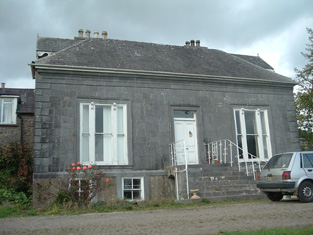
|
| Aldworth | Hajba writes that this house was occupied by members of the Bolster family who held it from the Newmans in the late 18th century. It then became a Lombard property and passed from them to a relative, James Hunt. In the early 1850s it was occupied by James Laurence Cotter, held from James Hunt and valued at £14. This house is still occupied. Another house close by named Aldworth Lodge was also a Bolster home valued at £4+ at the time of Griffith's Valuation. A house is also extant at the latter site. |

|
| Clydaville | Mrs Callaghan lived in this houses in 1814 and Mrs Sankey in 1837. Held by Hugh Delacour from Charles Haynes in the early 1850s when the house was valued at £15. The residence of the O'Connor family in the 20th century. Hajba records that the house was demolished in April 2002. | |
| Woodfort | Described in 1750 as "an handsome house, with elegant plantations" inhabited by Simeon Marshal, Surveyor General of Munster. Occupied by Ousley esq in the 1770s and 1780s, this house was the home of Richard Perry in 1814 and of T. Ware in 1837. It was valued at £30 at the time of Griffith's Valuation and still held by Thomas Weir from Charles Haynes. Later the home of the Carroll-Leahy family. In 1944 the Irish Tourist Association survey reported that it was a novitiate for the Sisters of St. Francis. This house now functions as Mount Alvernia Hospital. |

|
| Clyda | Hajba records the building of this house by Charles Haines in 1805. Occupied by Joseph Barry in 1814 and by the Reverend M. Becher in 1837. In the 1850s it was the residence of the Reverend Henry Swanzy who held it from Thomas Haynes. The buildings were valued at £24. Later the home of Lieutenant Colonel Robert D. Perry. In 1944 the Irish Tourist Association Survey noted it as the residence of Mr. Mandeville. In the late 20th century it was owed by the O'Meara family. |
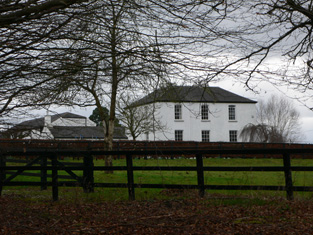
|
| Fern Hill | Smith records Cornelius Townshend as resident at Betsborough circa 1750. Hajba writes that it was a Townsend property from the early 18th century and birthplace of the United Irishman, Thomas Russell, executed in 1803. The house, on the outskirts of the village of Drommahane, was originally known as Bettesborough (or Besborough) and a Magner occupied a house of this name in 1837. The Reverend Philip Townsend held the house valued at £21+ from William Magner in the early 1850s. In June 1881 the house and demesne of Fernhill were advertised for sale. Barclay Corrie was the owner, holding on a lease dated 1863 from Richard John Perry to Michael Joseph Magnier. The house was demolished in the early 20th century and a new house built on the site. |
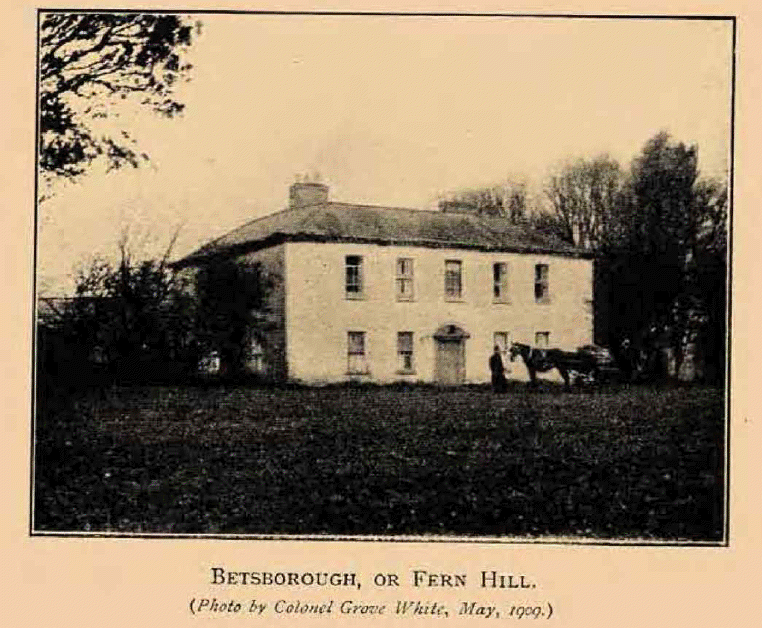
|
| Newberry Manor | This house was the seat of the Newman family in the 18th and 19th centuries. In 1786 Wilson refers to it as "Dromore, the seat of Mr. Newman". The house was valued at almost £49 in the mid 19th century and held by Adam Newman in fee. John R.B. Newman was resident in 1906. The house was burnt in June 1921 during the War of Independence when it was owned by John R. Pretyman Newman. It was rebuilt by the Newmans and then sold to the Poor Sisters of Nazareth as a nursing home. |
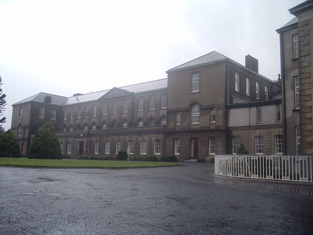
|
| Newberry House | This house was another Newman residence located in the parish of Kilshannig. In 1786 Wilson refers to Newberry as the residence of Colonel Newman, possibly the same man who was murdered in the house by his groom and an accomplice in 1816. John Newman held the property from Adam Newman at the time of Griffith's Valuation. The buildings were valued at £18.10 shillings. Post Griffith's Valuation the house became the home of the Swanzy family and it was they who built the present house incorporating the original one. The house was sold to the Footts in the 20th century. Also known as Kilshannig House. |
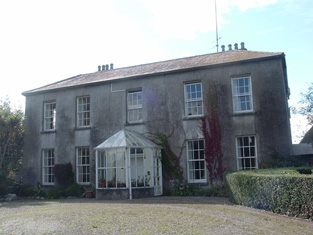
|
| Firville | A home of the Atkins family in the 18th and 19th centuries which in the early 1850s was held from John Clarke with 251 acres. Major Atkins occupied the house in 1814 and R. Atkins in 1837. Hajba writes that the Reverend Philip Atkins-Going left Firville to his unmarried daughters Charlotte and Henrietta when he died in 1861. Hussey de Burgh records Mrs Charlotte Henrietta Atkins of South Mall, Cork, owning 502 acres in the 1870s. Sold to Samuel Sheehan in 1914 this property still belonged to his descendants at the beginning of the 21st century. |
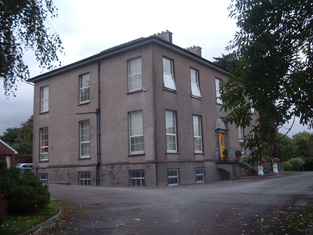
|
| Eden Hill | Situated on the Longfield estate and occupied by John Crosbie who held the house valued at £19.10 shillings from Joseph Carpenter. The Carpenter resided here from the late 18th century. Thomas Carmichael bought Carpenter's interest and advertised the sale of Eden Hill house and demesne in December 1856. Later the home of the Guerin family and in the late 20th century of the O'Callaghan family. |

|
| Millfort | This house was the home of the Foote family in the 18th century as Wilson refers to it as the seat of Mr. Foote in 1786. At the time of Griffith's Valuation the house was valued at £4.10 shillings, occupied by William Upplington and held from the representatives of George Foot. It appears to have fallen into ruin by the time the 25-inch Ordnance map was published in the 1890s and no trace remains now. | |
| Sunny Hill | In 1786 Wilson refers to a seat of Mr. Cotter in the town of Mallow. James Delacour, second son of Robert Delacour of Beare Forest, was residing at Sunny Hill in the mid 19th century. He held the property from Henry Braddle and it was valued at £36. He was still described as "of Sunny Hill" in 1886. The house became a rectory for about fifty years in the 20th century. In 1942 the Irish Tourist Association Survey referred to it as "a fine well kept residence built by J. Carmichael". It is now a private residence named Duarrigle. | |
| Carhookeal | This house was also known as Mount Watts and Castleview. It was the home of the Williamson family for most of the 19th century. Occupied by Arthur Williamson in the early 1850s and held by him from Richard Barrett. The buildings were valued at £22. Occupied by Colonel R. F. Williamson in 1906. The Irish Tourist Association Survey in 1942 noted that it used to have a third storey and that it was then unoccupied. The National Inventory of Architectural Heritage notes its use as a GAA clubhouse in this century. |
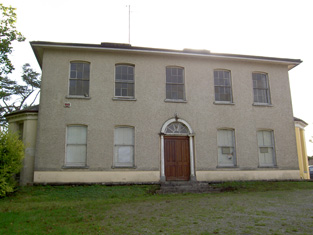
|
| Gooldshill | At the time of Griffith's Valuation Henry Goold was leasing land in the parish of Mallow to Michael Jones. Gooldshill was occupied by Edmund Roche who held the house and 7 acres from Michael Jones. The buildings were valued at £12. Hajba writes that this house is now derelict. | |
| Quartertown House | A Dillon residence in the mid 18th century, passed by marriage to the Crokers. Wilson, writing in 1786, refers to it as the seat of Mr. Dillon. The Crokers also owned the mills nearby. Occupied by John D. Croker at the time of Griffith's Valuation and held by him in fee. The buildings were valued at £40. Later bought by the Webb family. In 1942 the Irish Tourist Association Survey mentioned that it was then let to the Nazareth Sisters. It is now in ruins. | |
| Wilton | Valued at £15 at the time of Griffith's Valuation and held by James Welply from John D. Croker. Later occupied by Bradys, Westropps and Webbs, still extant. |
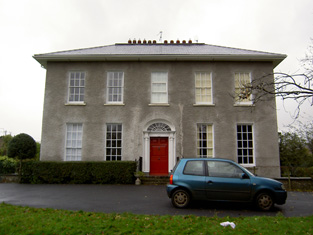
|
| Killetra [Mount Ruby] | Hajba writes that this house, originally known as Mount Ruby, derived its name from the Ruby family who lived there in the mid 18th century. Thomas Flynn, Justice of the Peace for Cork in 1793, married a Ruby. In 1786 Wilson refers to "Kilottery" as the seat of Mr. McCarthy. The house had a number of occupants, including John N. Wrixon, before it became the residence of Michael Jones at the time of Griffith's Valuation. It was valued at £18 and held from the representatives of Thomas Flynn. This house is still a family residence. | |
| Rockvale | Lewis refers to this recently erected mansion of Samuel George Beamish. In the early 1850s it appears to be unoccupied and valued at £12, the land was held by Michael Kelleher from S. G. Beamish. This house no longer exists. | |
| Mount Ruby | In 1942 the Irish Tourist Association Survey noted a house known as Mount Ruby which had been built by Arthur Gethin Creagh, c.1903-04. Its title echoes the name of another house in the same townland which has been known since the eighteenth century as Killetra House but which was originally called Mount Ruby. The twentieth century house, built in the Arts-and-Crafts style, is also still extant and occupied. |
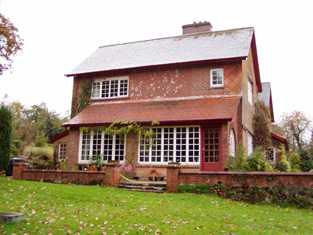
|

